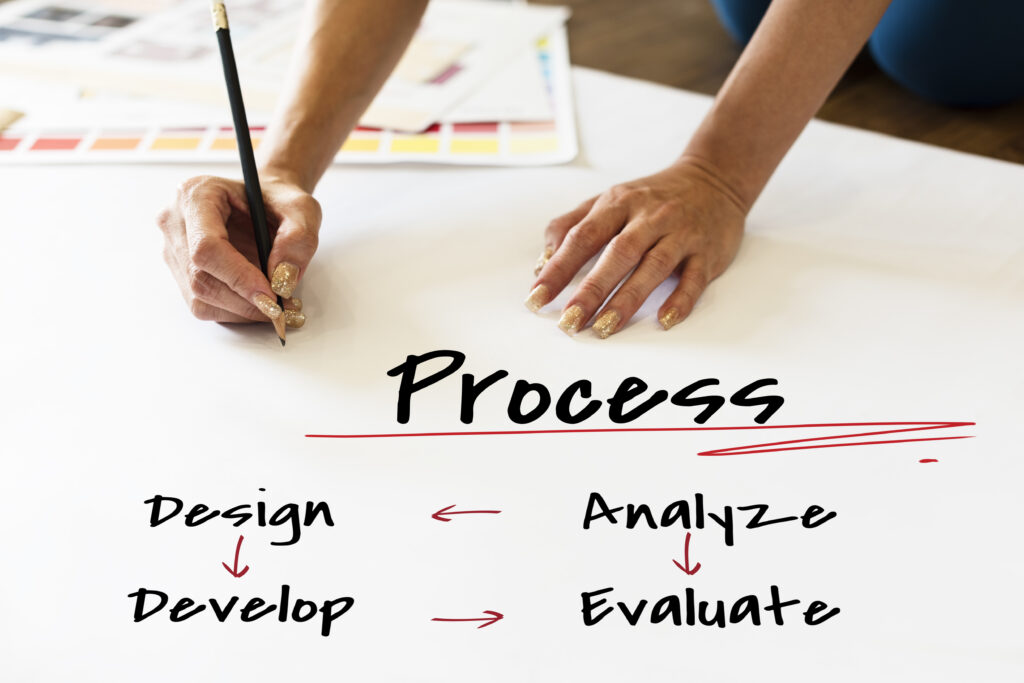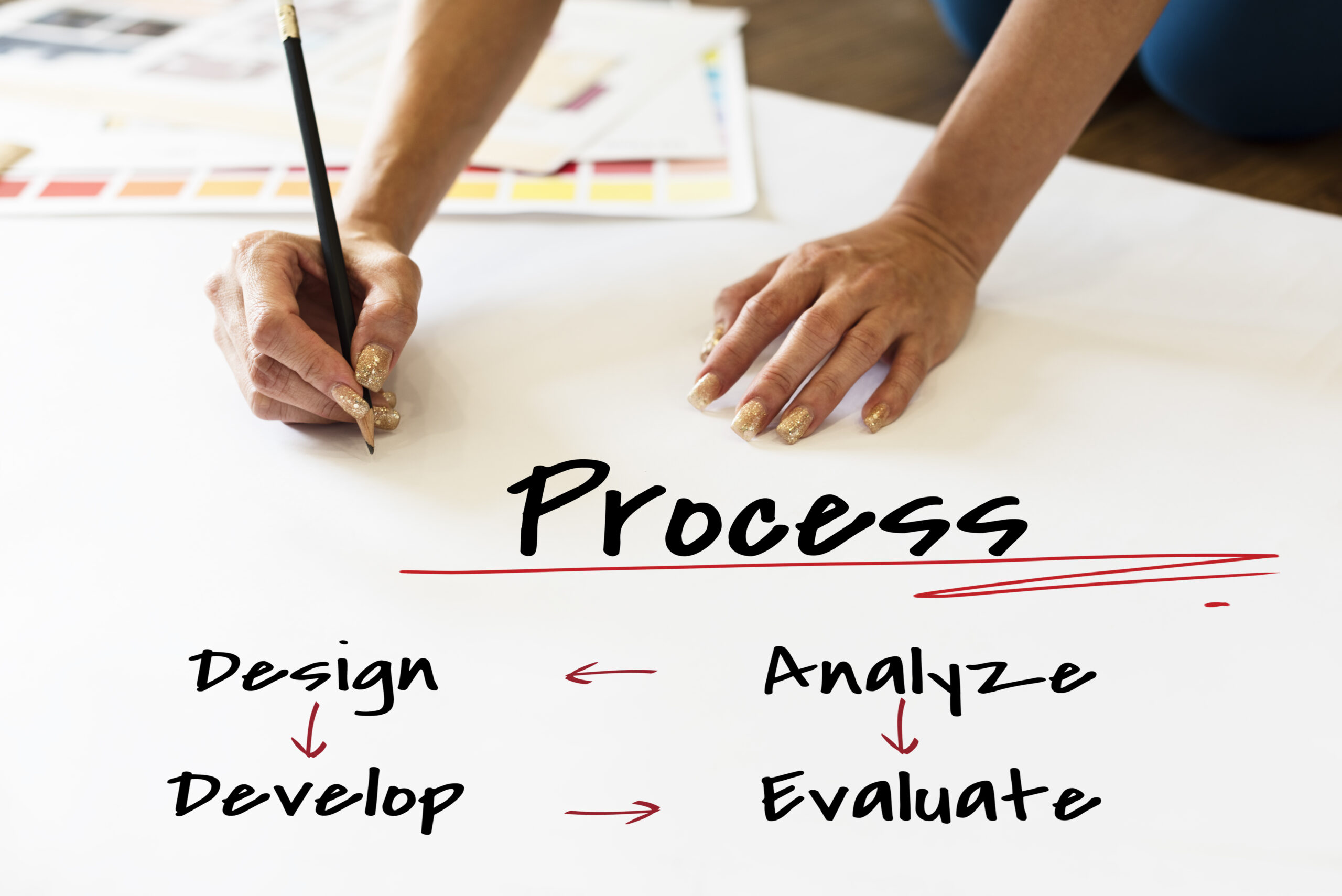
Step by Step Website Development Process in 2024 requires careful planning and execution to create an optimal user experience that ranks well in search engines. Here is a comprehensive step-by-step guide to building a modern website from start to finish.
1. Plan and Define the Website Goals
The first step is to clearly define the goals for your website. Consider the following:
- What is the purpose of the website? Is it an online store, content site, portfolio, etc.?
- Who is the target audience? Define user demographics and interests. Conduct user research if possible.
- What actions do you want visitors to take? Sign up for a newsletter? Make a purchase? Contact you?
- How will you determine success? Set concrete metrics like sales, conversions, page views.
Having clear website goals will inform all other decisions in the process.
2. Choose the Right Platform
With your goals in mind, determine the best platform for building the website. Some top options include:
- WordPress: Open source CMS perfect for blogs, content sites, and basic online stores. Easy to use and customize.
- Shopify: Ideal for ecommerce stores. Comes with shopping cart, payments, and business tools built-in.
- Webflow: Visual web design tool for creating responsive, modern websites without coding.
- Squarespace: Website builder with beautiful templates. Good for portfolios and simpler sites.
- Wix: Freemium website builder with 500+ designer templates. Drag and drop editor.
Think about long-term needs, scalability, and ease of use when choosing a platform.
3. Purchase a Domain Name and Web Hosting
Now it’s time to make your website official with a custom domain name and web hosting service.
Some tips for choosing a domain:
- Pick a name that’s short, memorable, and easy to spell.
- Use keywords relevant to your industry or location.
- Consider purchasing multiple extensions like .com, .net, .org.
- Check domain availability to see if your desired name is taken.
For hosting, choose a reliable provider with solid uptime, enough resources for your needs, strong security, and good customer support.
4. Design an Optimal Website Structure
Plan out the structure and navigation for the site. Aim for simple and intuitive.
Most websites should include pages like:
- Home: Introduction to your business. Highlights key products/services.
- About: Company history and team bios. Builds credibility.
- Services/Products: Detailed information about offerings.
- Contact: Page with contact form or info.
- Blog: For publishing regular content.
Organize the navigation into logical categories and keep important pages easy to find. Also plan footer content like legal pages.
5. Create Compelling Written Content
The words on your website make a strong impression on visitors. Follow best practices for writing optimized web content:
- Concise: Get straight to the point. Avoid overly long sentences or blocks of text.
- Scannable: Use short paragraphs, bullets, headings, and bold text to aid scanning.
- Value-focused: Answer why the product benefits visitors and solves their problems.
- Consistent voice: Maintain the same tone across all pages.
- Keyword optimized: Use relevant keywords naturally throughout copy.
Hire a professional writer if needed to create a high-quality website content foundation.
6. Select Visuals that Reinforce Your Brand
Imagery and visuals bring your brand to life while making content more engaging.
Important elements to include:
- Photos: High-quality images of products, team, customers, and graphics.
- Logo: Consistent logo placement throughout site.
- Icons: For visual interest and easier content skimming.
- Infographics: Display data and information visually.
- Videos: Show off products, explainers, customer testimonials.
All visual assets should align with your desired brand identity and style guide. Purchase stock photos or conduct a professional photoshoot if needed.
7. Build on Your Chosen CMS or Web Editor
Now it’s time to bring your website plan to life within your selected platform. If using a CMS like WordPress:
- Install core files and database on your hosting.
- Choose a responsive theme that matches your design needs.
- Customize the design using the CMS frontend editor or backend code.
- Add and customize plugins for additional functionality like contact forms.
- Manually create site architecture by adding pages and structuring menus.
- Publish written, visual, and multimedia content on relevant pages.
Alternatively, build the site directly in an online web editor like Webflow or Wix.
8. Enhance Website Performance
To maximize website speed and reliability, implement performance best practices:
- Optimized images: Compress file sizes and enable lazy loading.
- Caching: Cache elements to reduce server load.
- Minimal plugins: Limit extensions that slow things down.
- CDN for media: Store media files on a content delivery network.
- Efficient code: Keep code clean and efficient.
- SSL certificate: Use HTTPS encryption for security and SEO.
Faster performance yields better visitor experiences, lower bounce rates, and improved rankings.
9. Make the Site Mobile and Future Ready
With Google prioritizing mobile-friendly websites, it’s essential to optimize for all devices. Additionally, utilize modern web technologies for an advantage.
- Responsive design: Website adapts seamlessly to phones, tablets, laptops.
- AMP: Accelerated Mobile Pages for ultra-fast loading.
- Progressive web apps (PWAs): Behave like native mobile apps when installed.
- Web push notifications: Re-engage users with real-time alerts.
Keeping the website current with the latest capabilities will future-proof your investment.
10. Promote and Launch Your New Website
Congratulations, your website is ready to go live! Some launch best practices:
- Test rigorously: Check all pages, links, and use cases before public launch.
- Soft launch: Unveil to a small test group first.
- 301 redirects: Redirect old URLs to new site.
- Press release: Announce launch through media and PR channels.
- Search engine submission: Submit sitemap to Google and Bing for indexing.
- Marketing campaign: Run paid ads, social promos, email blasts to drive traffic.
- Analytics setup: Connect Google Analytics to monitor performance.
Celebrate a successful launch! Then begin iterating and optimizing based on real visitor data.
11. Optimize for Search Engine Visibility
Driving organic search traffic from Google requires in-depth SEO optimization. Ensure your website follows these best practices:
- Keyword research: Identify relevant target keywords to focus on. Analyze the search intent behind them.
- Semantic HTML: Use proper HTML tags like H1, H2, etc. to structure content.
- Optimized meta tags: Craft compelling meta descriptions optimized with primary keywords.
- Alt text: Include keyword-optimized alt text for all images.
- Backlinks: Build high-quality backlinks from other sites over time.
- Technical SEO: Proper site architecture, clean code, and fast speeds.
- Local SEO: Target local traffic by optimizing for city, keywords, and citations.
SEO is an ongoing process, but will continually grow your organic reach and visitors.
12. Set Up Conversion Tracking
To determine the ROI of your website, install conversion tracking. This tracks desired actions like:
- Page views
- Downloads
- Email signups
- Ecommerce purchases
- Contact form submissions
Popular options for adding conversion tracking include Google Analytics goals, Facebook Pixel, or plugins for your specific CMS platform.
This allows you to see your most effective website pages and campaigns.
13. Build an Email List with Lead Magnets
Email marketing remains an effective way to engage your audience. Offer compelling lead magnets in exchange for emails, such as:
- Free ebooks or guides
- Checklists or templates
- Discounts or vouchers
- Webinars or trainings
This builds a subscriber list you can continue nurturing through valuable email content. Just don’t spam! Focus on being helpful.
14. Maintain and Update Content
Websites require ongoing maintenance and fresh content. Schedule tasks like:
- Adding new blog posts and articles regularly.
- Updating pages with new products, staff, locations.
- Optimizing existing content for search rankings.
- Checking for broken links and fixing errors.
- Monitoring website traffic and performance metrics.
Appoint someone to oversee these website maintenance and content tasks.
15. Learn from Analytics and Optimize
Website analytics provide invaluable data about your visitors and where issues occur. Some key metrics to monitor:
- Traffic sources: Where visitors come from
- Top landing/exit pages: Entry and drop off points
- Bounce rate: Single page visits with no other activity
- Conversion rates: For goals set up
- Site speed: Page load times
Analyze this data frequently. Then use insights to iterate and optimize your website for maximum performance.
Conclusion
Following this comprehensive process will help develop an effective website that meets your business goals while delivering value to visitors. Adapt the steps and timeline based on your specific needs and abilities. The work doesn’t end at launch – you must continually maintain, optimize, and enhance the site over time. With a data-driven and user-centric approach, your website can provide great returns on investment for years to come.
Frequently Asked Questions
What are the most important elements on a website?
Some of the most important elements on any website include:
- Clear headline and value proposition
- Quality photography and visuals
- Logical navigation and site architecture
- Compelling and scannable written content
- Clear calls-to-action driving visitors to convert
- Fast performance and mobile optimization
These elements combine to create a positive user experience and achieve business goals.
How much does it cost to build a website in 2024?
The cost to build a website can range from $2,500 to $15,000+ in 2024, depending on the complexity and options used. Factors like custom design, ecommerce functions, and professional copywriting will increase costs. Those using a simple DIY website builder can pay under $100 annually.
What is the best platform for building a website?
The best website platform depends on your specific needs. WordPress is the most popular open source option perfect for blogs and content websites. Shopify is ideal for setting up ecommerce stores. Squarespace provides beautiful templates for portfolios and simpler sites. Do your research to pick the one that aligns with your goals, budget and abilities.
How long does it take to build a website?
For experienced web developers building custom websites, the process takes 1-3 months on average. Those using DIY website builders can get online in a few hours or days. Consider how much time you can devote, whether you need a custom or template site, your content volume, and any special features required. Set realistic project timelines.
How can I promote my new website?
Some effective ways to promote a new website include: content marketing through blogging and social media, SEO optimization, email marketing, online advertising through paid ads and retargeting, press releases, word of mouth and viral marketing by encouraging shares, local marketing like flyers and partnerships, and influencer collaborations in your niche.
Read More :
Best Ecommerce Website Development – 2024 Recommendations
Ecommerce Website Development Company & Services – Exogrow Solutions
The Complete Guide to Voice Search Optimization – Strategies to Rank Higher in Voice Results

Recent Comments